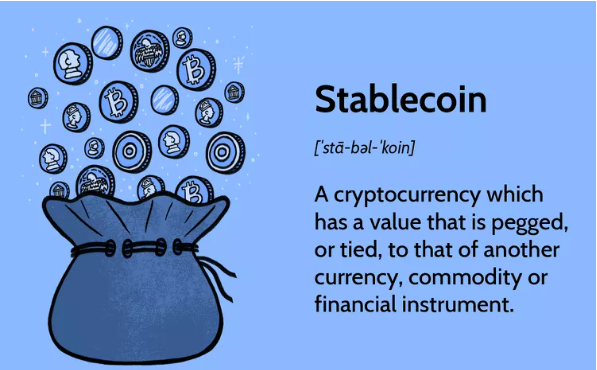What Are Stablecoins and Why Are They Important?
Cryptocurrency is often described as volatile and for good reason. One moment, Bitcoin is skyrocketing; the next, it’s dropping like a rock. But what if there were a type of cryptocurrency that didn’t fluctuate wildly in value?
That’s where stable cryptocurrencies come in.
In this post, we’ll explain what stable cryptocurrencies are, how they work, and why they’ve become such an essential part of the crypto ecosystem especially for beginners, traders, and DeFi users.
What Is a Stablecoin?
A stable cryptocurrencies is a type of cryptocurrency designed to maintain a stable value by being pegged to a reserve asset, such as:
-
Fiat currencies like the U.S. dollar (USD), Euro (EUR), or British Pound (GBP)
-
Commodities like gold
-
Or in some cases, even other cryptocurrencies
Unlike Bitcoin or Ethereum, which can experience massive price swings, stable cryptocurrencies aim to stay as close to $1 as possible (if pegged to USD).
⚙️ How Do Stablecoins Work?
Stablecoins are backed by different mechanisms:
1. Fiat-Collateralized Stablecoins
Backed 1:1 by real-world fiat currency held in bank reserves.
-
Examples:
-
USDT (Tether)
-
USDC (USD Coin)
-
BUSD (Binance USD)
-
-
✅ Pros: Simple, relatively stable
-
🚫 Cons: Requires trust in the issuing company and custodians
2. Crypto-Collateralized Stablecoins
Backed by other cryptocurrencies (usually over-collateralized to manage volatility).
-
Example:
-
DAI (backed by Ethereum and other assets through smart contracts on MakerDAO)
-
-
✅ Pros: Decentralized, transparent
-
🚫 Cons: Complex system, still exposed to crypto volatility
3. Algorithmic Stablecoins
Maintains stability through supply-and-demand algorithms rather than backing with real assets.
-
Examples:
-
FRAX
-
(Note: TerraUSD/UST was an algorithmic stablecoin that failed)
-
-
✅ Pros: Decentralized, innovative
-
🚫 Cons: High risk, prone to collapse if the algorithm fails
📌 Why Are Stablecoins Important?
1. Price Stability
-
Offer a reliable medium of exchange in the volatile crypto world
-
Great for preserving value without exiting the crypto ecosystem
2. Simplified Trading
-
Allow users to trade in and out of cryptocurrencies without converting to fiat
-
Easier to measure profit/loss when denominated in USD or other stable units
3. DeFi & Yield Farming
-
Power decentralized finance (DeFi) protocols as collateral, lending assets, or liquidity pool pairs
-
Users can earn interest or yield without exposure to high price swings
4. Cross-Border Payments
-
Enable fast, low-cost, borderless transactions — especially helpful in countries with unstable currencies or limited banking
5. Financial Inclusion
-
Offers access to USD-equivalent value in countries where the dollar is difficult to obtain
-
Reduces reliance on volatile local currencies
🔐 Are Stablecoins Safe?
Stablecoins are not without risks, especially depending on how they’re backed:
-
Centralization risk – Fiat-backed stablecoins are issued by companies, meaning you must trust them to manage reserves properly
-
Regulatory risk – Governments are increasingly looking to regulate or restrict stablecoin use
-
Depegging – If the stablecoin loses its peg, users may experience losses (as happened with UST in 2022)
That said, top stablecoins like USDC and USDT remain widely used and relatively reliable — especially when issued by regulated entities or supported by audits.
✅ How to Use Stablecoins
-
Hold value in crypto form during volatile periods
-
Swap quickly between coins on exchanges or DEXs
-
Earn passive income through DeFi staking and lending platforms
-
Send money abroad with low fees and no intermediaries
-
Use for online payments where accepted
Final Thoughts
Stablecoins bridge the gap between traditional finance and cryptocurrency by offering the best of both worlds — the flexibility and speed of crypto with the stability of fiat.
Whether you’re a trader, investor, or just curious about crypto, understanding stablecoins is key to navigating the ecosystem safely and effectively.


